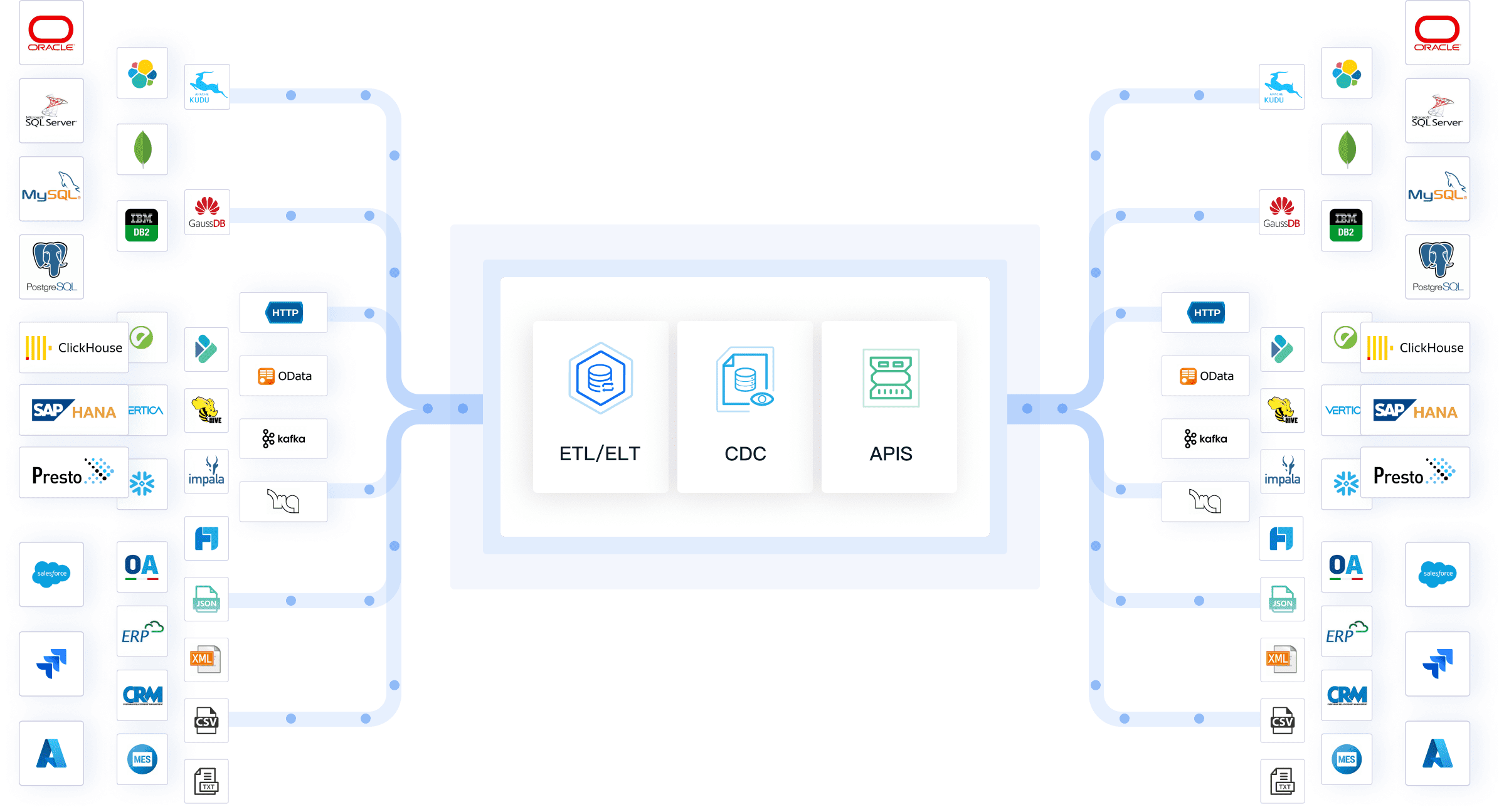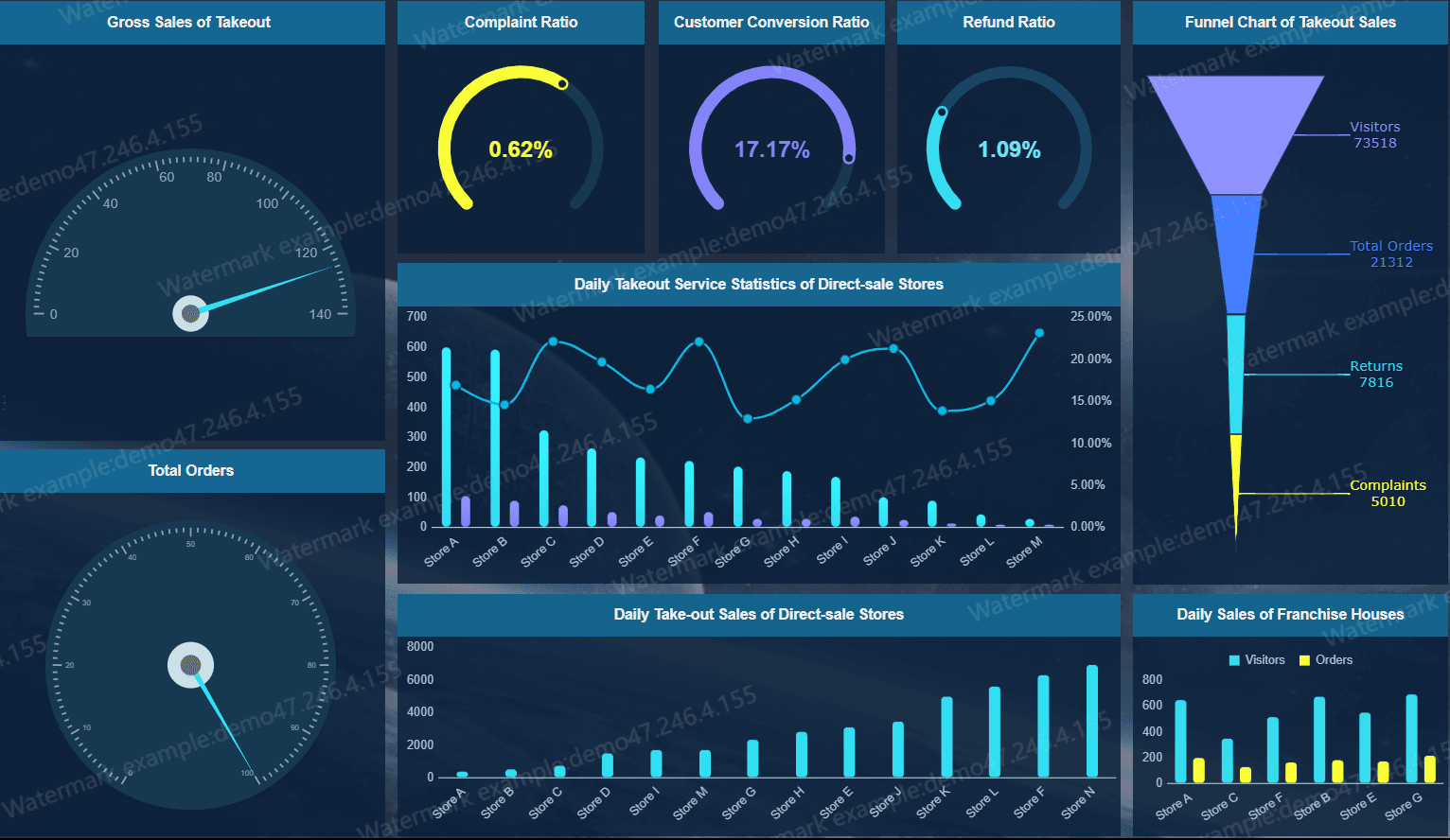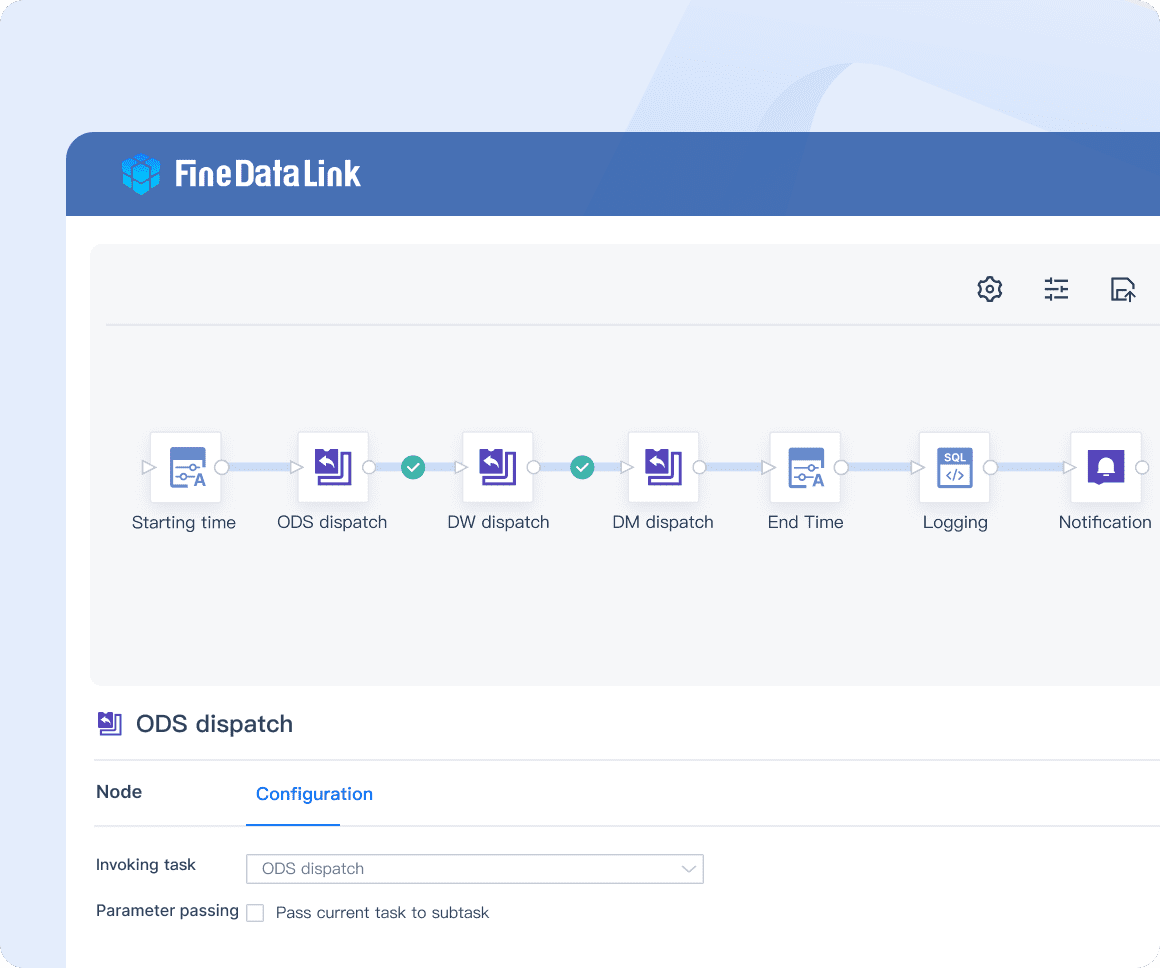


Data inventory serves as a comprehensive catalog of an organization's data assets. It plays a crucial role in achieving organizational success by enhancing operational efficiency and supporting strategic decision-making. A well-maintained data inventory prevents resource wastage and data duplication, ensuring a clear understanding of data assets. Tools like FineDataLink and FineBI empower businesses to manage data effectively, enabling better data sharing and informed decisions. FanRuan remains committed to providing innovative solutions that harness data-driven insights for business growth.
Understanding Data Inventory
Definition and Components of Data Inventory
Data inventory acts as a comprehensive catalog of an organization's data assets. It encompasses various components that ensure the effective management and utilization of data. Two critical components include data cataloging and metadata management.
Data Cataloging
Data cataloging involves creating an organized inventory of data assets. It provides a structured framework that helps organizations locate, access, and utilize data efficiently. By cataloging data, organizations can prevent resource wastage and data duplication. This process enhances operational efficiency and supports strategic decision-making. Seersco, an expert in data inventory and security, emphasizes that a comprehensive data inventory improves operational efficiency and facilitates better data sharing across departments.
Metadata Management
Metadata management plays a crucial role in data inventory. It involves managing data about data, such as descriptions, origins, and usage. Metadata provides context and meaning to data, making it easier for organizations to understand and utilize their data assets effectively. Proper metadata management ensures data quality and consistency, which are essential for informed decision-making.
Purpose of Data Inventory
The primary purpose of data inventory is to enhance data accessibility and ensure data quality assurance.
Data Accessibility
Data inventory improves data accessibility by providing a clear overview of an organization's data assets. It allows employees to locate and access the data they need quickly and efficiently. This accessibility supports informed decision-making and enhances collaboration across departments. By having a well-maintained data inventory, organizations can ensure that data is readily available to those who need it.
Data Quality Assurance
Data quality assurance is another critical purpose of data inventory. By maintaining a comprehensive inventory, organizations can identify and address data quality issues promptly. This process ensures that data is accurate, consistent, and reliable. High-quality data is essential for making informed decisions and achieving organizational success. As Seersco highlights, establishing a dedicated oversight authority ensures consistent coordination and effective management of data quality assurance.
Benefits of Data Inventory

Improved Decision-Making
Data inventory significantly enhances decision-making within organizations. It provides a structured framework for accessing and analyzing data, which leads to more informed decisions.
Data-Driven Strategies
Organizations can develop data-driven strategies by leveraging a comprehensive data inventory. This approach allows them to base their strategies on accurate and up-to-date information. As a result, businesses can respond more effectively to market changes and customer needs. Data inventory ensures that decision-makers have access to relevant data, enabling them to craft strategies that align with organizational goals.
Enhanced Analytical Capabilities
A well-maintained data inventory boosts analytical capabilities. It provides a clear overview of data assets, allowing analysts to perform more accurate and insightful analyses. With enhanced analytical capabilities, organizations can identify trends, patterns, and opportunities that may have otherwise gone unnoticed. This insight supports proactive decision-making and strategic planning.
Compliance and Risk Management
Data inventory plays a crucial role in compliance and risk management. It helps organizations adhere to regulatory requirements and manage data-related risks effectively.
Regulatory Compliance
Maintaining a data inventory ensures that organizations comply with data privacy regulations. It provides a comprehensive view of data assets, making it easier to track and manage data in accordance with legal requirements. By ensuring regulatory compliance, organizations can avoid potential fines and legal issues.
Data Security and Privacy
Data inventory enhances data security and privacy by providing a clear understanding of where sensitive data resides. Organizations can implement appropriate access controls and security measures to protect data from unauthorized access. This proactive approach to data security reduces the risk of data breaches and enhances overall data privacy.
Operational Efficiency
Data inventory contributes to operational efficiency by streamlining processes and reducing costs.
Streamlined Processes
Organizations can streamline their processes by utilizing a data inventory. It provides a structured framework for accessing and managing data, reducing the time and effort required to locate and use data. Streamlined processes lead to increased productivity and efficiency across departments.
Cost Reduction
A comprehensive data inventory helps organizations reduce costs by identifying and eliminating data duplication and unnecessary storage. By optimizing data management efforts, organizations can allocate resources more effectively and achieve cost savings. Data inventory provides an excellent return on investment by enhancing overall data management and decision-making.
Challenges Without Data Inventory
Organizations face significant challenges when they lack a comprehensive data inventory. These challenges can hinder operational efficiency and strategic decision-making.
Data Silos
Data silos represent one of the most pressing issues. They occur when fragmented data sources exist within an organization.
Fragmented Data Sources
Fragmented data sources lead to inefficiencies. Employees struggle to access the information they need. This fragmentation results in wasted time and resources. Without a unified data inventory, organizations cannot achieve a single source of truth. This lack of cohesion makes it difficult to gather quality data for actionable insights.
Lack of Integration
A lack of integration compounds the problem of data silos. When systems do not communicate effectively, data remains isolated. This isolation prevents organizations from gaining a holistic view of their operations. As a result, decision-makers may rely on incomplete or outdated information. This reliance can lead to flawed insights and misguided decisions.
Inefficient Data Management
Inefficient data management poses another challenge. It often results in redundant data and inaccurate reporting.
Redundant Data
Redundant data clutters systems and wastes storage space. It ties up valuable resources and complicates data management efforts. Without an accurate inventory, organizations cannot identify and eliminate duplicate data. This redundancy leads to increased costs and decreased efficiency.
Inaccurate Reporting
Inaccurate reporting stems from poor data management. When data lacks accuracy, reports become unreliable. Decision-makers may base their strategies on flawed information. This inaccuracy can have far-reaching consequences, affecting everything from demand forecasts to risk assessments. Organizations must maintain an accurate data inventory to ensure reliable reporting and informed decision-making.
"Inaccurate or outdated data can lead to flawed insights and misguided decisions." This quote highlights the importance of maintaining a comprehensive data inventory to avoid such pitfalls.
Steps to Implement Data Inventory
Implementing a data inventory involves several key steps that ensure an organization effectively manages its data assets. These steps provide a structured approach to understanding, organizing, and utilizing data for improved decision-making and operational efficiency.
Assessing Current Data Assets
Organizations must first assess their current data assets to establish a comprehensive data inventory. This assessment involves two critical activities: data auditing and identifying data sources.
Data Auditing
Data auditing serves as the initial step in assessing data assets. Organizations conduct audits to evaluate the quality, accuracy, and completeness of their data. This process helps identify any discrepancies or gaps in data management. By auditing data, organizations gain insights into their existing data landscape, which lays the foundation for effective data inventory management.
Identifying Data Sources
Identifying data sources follows data auditing. Organizations need to pinpoint where their data resides, whether in databases, cloud storage, or other systems. This step ensures that all data sources are accounted for in the inventory. By understanding the origins of their data, organizations can better manage and integrate it across different platforms.
Developing a Data Inventory Strategy
Once organizations have assessed their data assets, they must develop a strategy for implementing a data inventory. This strategy involves setting objectives and allocating resources effectively.
Setting Objectives
Setting clear objectives is crucial for a successful data inventory strategy. Organizations should define what they aim to achieve with their data inventory, such as improving data accessibility or enhancing data quality. Clear objectives guide the implementation process and ensure that the data inventory aligns with organizational goals.
Resource Allocation
Resource allocation plays a vital role in developing a data inventory strategy. Organizations must allocate the necessary resources, including personnel, technology, and budget, to support the implementation process. Proper resource allocation ensures that the data inventory project receives the attention and support it needs to succeed.
Utilizing Technology Solutions
Technology solutions play a significant role in implementing a data inventory. Organizations can leverage various tools and technologies to streamline the process and enhance data management.
Data Inventory Tools
Data inventory tools provide organizations with the capabilities to catalog and manage their data assets effectively. These tools offer features such as data cataloging, metadata management, and data lineage tracking. By utilizing data inventory tools, organizations can create a centralized repository of their data assets, facilitating better data governance and integration.
Automation and AI
Automation and AI technologies further enhance the data inventory process. Automation reduces manual efforts by streamlining data collection and management tasks. AI technologies provide advanced analytics and insights, enabling organizations to understand their data better. By incorporating automation and AI, organizations can achieve greater efficiency and accuracy in their data inventory efforts.
"In today’s digital world, data is the lifeblood of most organizations." This quote underscores the importance of managing data effectively through a well-implemented data inventory.
Leveraging FineDataLink for Data Integration
FineDataLink serves as a powerful tool for organizations aiming to optimize their data inventory processes. It provides a seamless platform for integrating data across various systems, ensuring that businesses can manage their data assets effectively. By leveraging FineDataLink, organizations can enhance their data inventory capabilities, leading to improved operational efficiency and strategic decision-making.
Real-Time Data Synchronization
Real-time data synchronization is a critical feature of FineDataLink. It allows organizations to keep their data inventory updated with the latest information. This capability ensures that data remains consistent and accurate across all platforms. By synchronizing data in real-time, businesses can avoid the pitfalls of outdated or inconsistent data, which can lead to flawed insights and decisions.

- Benefits of Real-Time Synchronization:
- Ensures data consistency across systems
- Reduces the risk of data duplication
- Enhances decision-making with up-to-date information
FineDataLink's real-time synchronization feature supports the seamless flow of data, enabling organizations to maintain a comprehensive and accurate data inventory. This functionality is essential for businesses that rely on timely data to drive their operations and strategies.
Advanced ETL & ELT Development
FineDataLink also excels in advanced ETL (Extract, Transform, Load) and ELT (Extract, Load, Transform) development. These processes are vital for managing a robust data inventory. They allow organizations to extract data from various sources, transform it into a usable format, and load it into a centralized system for analysis and reporting.

- Key Features of ETL & ELT Development:
- Streamlines data integration from multiple sources
- Facilitates data transformation for better usability
- Supports comprehensive data analysis and reporting
By utilizing FineDataLink's advanced ETL and ELT capabilities, organizations can enhance their data inventory management. This approach provides greater visibility into data assets, allowing businesses to leverage their data for improved operations and strategic growth.
"In today’s digital world, data is the lifeblood of most organizations." This statement underscores the importance of managing data effectively through tools like FineDataLink. By maintaining a well-organized data inventory, businesses can ensure that their data serves as a valuable asset for achieving organizational success.
Best Practices for Maintaining Data Inventory
Regular Updates and Reviews
Maintaining a data inventory requires regular updates and reviews. Organizations should establish a routine to ensure their data inventory remains accurate and relevant.
Scheduled Audits
Scheduled audits play a crucial role in maintaining data inventory. Organizations should conduct these audits periodically to assess the quality and completeness of their data assets. Audits help identify discrepancies, outdated information, and areas for improvement. By scheduling regular audits, organizations can ensure their data inventory reflects the current state of their data assets.
- Benefits of Scheduled Audits:
- Identify outdated or redundant data
- Ensure data accuracy and completeness
- Highlight areas for improvement
"Regular audits ensure that data remains a valuable asset for decision-making." This quote emphasizes the importance of maintaining an up-to-date data inventory through scheduled audits.
Continuous Improvement
Continuous improvement is essential for effective data inventory management. Organizations should strive to enhance their data processes and systems regularly. This approach involves evaluating current practices, identifying inefficiencies, and implementing changes to optimize data management. By focusing on continuous improvement, organizations can maintain a robust and efficient data inventory.
- Strategies for Continuous Improvement:
- Regularly review data management practices
- Implement feedback from audits and reviews
- Adapt to new technologies and methodologies
Training and Awareness
Training and awareness initiatives are vital for maintaining a successful data inventory. Organizations must ensure that employees understand the importance of data inventory and know how to manage it effectively.
Employee Training Programs
Employee training programs equip staff with the necessary skills and knowledge to manage data inventory. These programs should cover topics such as data cataloging, metadata management, and data quality assurance. By providing comprehensive training, organizations can empower employees to contribute to maintaining an accurate and efficient data inventory.
- Components of Effective Training Programs:
- Hands-on workshops and practical exercises
- Regular updates on data management best practices
- Access to resources and support for ongoing learning
"Training programs empower employees to manage data effectively." This statement highlights the role of training in maintaining a successful data inventory.
Promoting Data Literacy
Promoting data literacy across the organization enhances data inventory management. Employees should understand the value of data and how to use it effectively. Organizations can achieve this by fostering a culture of data literacy through workshops, seminars, and collaborative projects. By promoting data literacy, organizations ensure that all employees can contribute to maintaining a comprehensive and accurate data inventory.
- Ways to Promote Data Literacy:
- Organize data-focused events and discussions
- Encourage cross-departmental collaboration on data projects
- Provide access to data resources and tools
By following these best practices, organizations can maintain a robust data inventory that supports informed decision-making and operational efficiency. Tools like FineDataLink facilitate seamless data integration and management, ensuring that businesses can leverage their data assets effectively.
Case Studies of Successful Data Inventory Implementation

FanRuan's FineBI in Action
Overview of Implementation
FanRuan's FineBI has revolutionized data inventory management for numerous organizations. By implementing FineBI, businesses have transformed their data handling processes. FineBI offers a self-service business intelligence platform that empowers users to connect, analyze, and share data seamlessly. Organizations have integrated FineBI into their existing systems, allowing them to create a comprehensive data inventory. This integration has enabled them to catalog data assets efficiently and manage metadata effectively.

"Understanding how different business units plan to interact and use the data inventory will help guide the information gathering process," says a Data Privacy Officer. FineBI facilitates this understanding by providing a user-friendly interface that encourages collaboration across departments.
Results Achieved
The results achieved with FineBI have been remarkable. Organizations have reported significant improvements in data accessibility and quality assurance. FineBI's intuitive design allows users to locate and utilize data quickly, enhancing decision-making capabilities. Businesses have experienced a boost in operational efficiency as FineBI streamlines data processes and reduces redundancy.

Moreover, FineBI's role-based access control ensures data security and privacy, which is crucial for compliance with regulations. The platform's ability to transform raw data into insightful visualizations has empowered organizations to make informed decisions based on accurate and up-to-date information.
Global Enterprise Success with FineDataLink
Overview of Integration
FineDataLink has played a pivotal role in the success of global enterprises by optimizing their data inventory processes. This enterprise-level data integration platform simplifies complex data tasks, making it an ideal choice for businesses seeking efficient solutions. FineDataLink's low-code approach and real-time data synchronization capabilities have allowed organizations to integrate data from various sources seamlessly.

Data Professionals emphasize the importance of collecting essential data, such as names and email addresses, to build a robust data inventory. FineDataLink supports this by providing advanced ETL and ELT development features, enabling organizations to extract, transform, and load data efficiently.
Results and Benefits
The integration of FineDataLink has yielded impressive results for global enterprises. Businesses have reported enhanced data connectivity and streamlined data flows, leading to improved operational efficiency. FineDataLink's real-time synchronization ensures data consistency across systems, reducing the risk of data duplication and inaccuracies.
Organizations have also benefited from FineDataLink's ability to handle diverse data sources, including SaaS applications and cloud environments. This flexibility has allowed businesses to maintain a comprehensive and accurate data inventory, supporting strategic decision-making and growth.
"Your data inventory isn't just an archive; it should allow you to answer specific questions about the data your organization holds," notes a Data Privacy Officer. FineDataLink empowers organizations to achieve this by providing a centralized platform for data management and integration.
Future Trends in Data Inventory
Emerging Technologies
AI and Machine Learning
Artificial Intelligence (AI) and Machine Learning (ML) are transforming data inventory management. These technologies automate data collection and analysis, reducing manual effort and increasing accuracy. AI algorithms can identify patterns and anomalies in data, providing valuable insights for decision-making. Machine learning models enhance predictive analytics, allowing organizations to anticipate trends and make proactive decisions. By integrating AI and ML, businesses can streamline their data inventory processes and improve data quality.
Blockchain
Blockchain technology offers a secure and transparent way to manage data inventories. It provides a decentralized ledger that records data transactions, ensuring data integrity and traceability. Organizations can use blockchain to verify data authenticity and prevent unauthorized access. This technology enhances data security and privacy, making it an ideal solution for managing sensitive information. As blockchain adoption grows, more businesses will leverage its capabilities to maintain accurate and secure data inventories.
Evolving Data Regulations
Global Compliance Standards
Data regulations are evolving rapidly, with global compliance standards becoming more stringent. Organizations must adhere to regulations such as the General Data Protection Regulation (GDPR) and the California Consumer Privacy Act (CCPA). These standards require businesses to maintain comprehensive data inventories to ensure data privacy and protection. Compliance with these regulations not only avoids legal penalties but also builds trust with customers. Companies must stay informed about regulatory changes and update their data inventory practices accordingly.
Data Sovereignty
Data sovereignty refers to the concept that data is subject to the laws and governance structures within the nation it is collected. As countries implement stricter data sovereignty laws, organizations must ensure their data inventories comply with local regulations. This involves understanding where data is stored and processed and ensuring it aligns with national laws. Businesses must adapt their data management strategies to navigate the complexities of data sovereignty and maintain compliance across different jurisdictions.
"Incorporating data visualization into the inventory not only helped acquire a single source of truth but also staged the data in a manner that provided quality data for actionable insights." This insight from a Business Analyst highlights the importance of adapting to emerging technologies and evolving regulations to maintain an effective data inventory.
Data inventory emerges as a pivotal element for organizational success. It enhances operational efficiency and accountability by providing a clear understanding of data assets. Organizations can improve risk management and security by establishing a comprehensive data inventory. Prioritizing data inventory as a strategic asset ensures informed decision-making and resource optimization. FanRuan plays a crucial role in this landscape by offering innovative solutions like FineDataLink and FineBI. These tools empower businesses to harness data-driven insights, fostering growth and resilience in an ever-evolving digital world.
FAQ
A data inventory serves as a comprehensive catalog of an organization's data assets. It provides a structured overview of data sources, types, and usage, enabling effective data management and utilization.
Data inventory plays a crucial role in enhancing operational efficiency and supporting strategic decision-making. It prevents resource wastage and data duplication, ensuring a clear understanding of data assets. Organizations can leverage data inventory to improve data sharing and make informed decisions.
Maintaining a data inventory helps organizations comply with data privacy regulations like GDPR and CCPA. It provides a comprehensive view of data assets, making it easier to track and manage data in accordance with legal requirements. This compliance avoids potential fines and legal issues.
FineDataLink offers advanced features for data integration and management. It supports real-time data synchronization and advanced ETL & ELT development, enhancing data inventory capabilities. These features ensure data consistency and accuracy, leading to improved operational efficiency and strategic decision-making.
Organizations should conduct regular updates and reviews to maintain an accurate data inventory. Scheduled audits help identify discrepancies and outdated information. Continuous improvement strategies, such as evaluating current practices and implementing changes, ensure a robust and efficient data inventory.
Emerging technologies like AI, ML, and IoT offer deeper insights and predictive analytics for inventory processes. AI and ML automate data collection and analysis, reducing manual effort and increasing accuracy. These technologies enhance data quality and streamline data inventory processes.
Data inventory supports data-driven innovation and digital transformation by identifying opportunities for leveraging data. It enables organizations to manage and protect their data assets effectively, driving business growth and protecting against data breaches.
Without a data inventory, organizations may encounter data silos, inefficient data management, and inaccurate reporting. These challenges hinder operational efficiency and strategic decision-making. A comprehensive data inventory addresses these issues by providing a unified view of data assets.
Continue Reading About Data Inventory
2025 Best Data Integration Solutions and Selection Guide
Explore top data integration solutions for 2025, enhancing data management and operational efficiency with leading platforms like Fivetran and Talend.
Howard
Dec 19, 2024
2025 Data Pipeline Examples: Learn & Master with Ease!
Unlock 2025’s Data Pipeline Examples! Discover how they automate data flow, boost quality, and deliver real-time insights for smarter business decisions.
Howard
Feb 24, 2025
Best Data Integration Platforms to Use in 2025
Explore the best data integration platforms for 2025, including cloud-based, on-premises, and hybrid solutions. Learn about key features, benefits, and top players.
Howard
Jun 20, 2024
Best Data Integration Vendors for Seamless Workflows
Discover the top 20 data integration vendors of 2025 for seamless workflows. Compare tools like Talend, AWS Glue, and Fivetran to optimize your data processes.
Howard
Jan 22, 2025
Best Data Management Tools of 2025
Explore the best data management tools of 2025, including FineDataLink, Talend, and Snowflake. Learn about their features, pros, cons, and ideal use cases.
Howard
Aug 04, 2024
2025's Best Data Validation Tools: Top 7 Picks
Explore the top 7 data validation tools of 2025, featuring key features, benefits, user experiences, and pricing to ensure accurate and reliable data.
Howard
Aug 09, 2024




